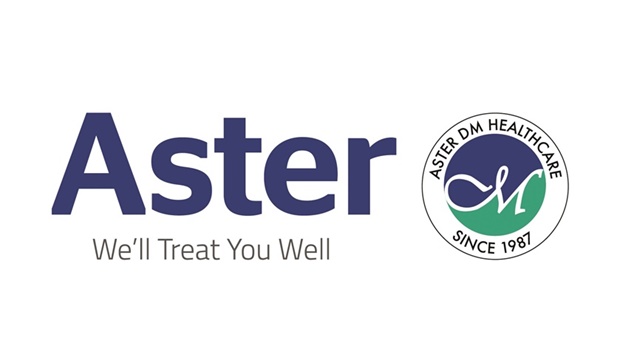 We find ourselves at a time where disease once found in the elderly is now seen at a much younger age. This paradox is despite the plethora of information, advanced investigations and treatment options. It makes room to ponder if parameters we aim to correct just happen to account for only the tip of the ‘disease iceberg’.
We find ourselves at a time where disease once found in the elderly is now seen at a much younger age. This paradox is despite the plethora of information, advanced investigations and treatment options. It makes room to ponder if parameters we aim to correct just happen to account for only the tip of the ‘disease iceberg’.
Cardiovascular diseases (CVD) account for 17.9 million deaths annually worldwide. These diseases are associated with risk factors that are non-modifiable (E.g.: Age, sex, ethnicity and family history) and modifiable (Hypertension, smoking, diabetes, dyslipidemia, physical inactivity, poor diet, sub optimal sleep and stress). It is said that bulk of CVD is preventable if the modifiable risk factors are corrected.
A strict discipline in lifestyle choices complemented by pills and procedures where warranted should be the norm rather that ignoring the former and relying on the belief that all solutions lie in the latter!
In order to fix what went wrong it pays to go back to the drawing board and understand the design and purpose of the marvelously bioengineered human body. The fundamental purpose of the design was to adapt to survive. The physiological adaptation is immediate whereas genetic adaptations are over millions of years. Majority of the modern day diseases stem due to the consequence of ignoring the human design in areas of diet, physical activity, sleep and stress management. The scope of this article due to space constraints will address only key principles of these four pillars of healthy lifestyle.
1.Diet:
There is an abundance of dietary advice in medical literature. However there is no single solution that fits all! The human design accounted for famine by facilitating storage. The time of abundance led to overeating resulting in high glucose levels and consequently a response by the body producing high insulin levels to neutralize and store it. Both excess glucose and insulin harms the body resulting in an inflammatory and clot prone environment, obesity, hypertension, diabetes, dyslipidemia and even cancers to name a few ill effects!
More harmful than glucose is fructose that makes up 50% of dietary sugar. Liver is the organ that metabolises fructose. Dietary overburdening with fructose damages the liver. There are proponents and opponents when it comes to the effects of dietary cholesterol and saturated fats so due diligence is advised. What however is universally agreed upon are to avoid over eating, sugar, processed food, trans fats and higher omega 6 content. The practical ways to give the body a break from high insulin levels is by reducing frequency of meals and have a food free interval (intermittent fasting or time restricted feeding). Time restricted feeding or intermittent fasting is an option which has to be done in consultation with a physician as it is not for everyone (E.g.: Type I diabetics, elderly, children and those with eating disorders). Remember that different substance of equal calories is not processed by the body alike e.g.: 100 calories from carrot is more favourably processed as opposed to 100 calories from a sugar sweetened beverage. Plan calories from a balanced diet to sustain an ideal body weight for height.
2.Exercise:
Many consider exercise as a tool to reduce weight and build muscle. Exercise is complementary to diet management in the treatment of obesity. The benefits of exercise can be offset if there suboptimal diet planning. Four aspects need to be addressed when comprehensive exercise is planned.
A) Aerobic activity: Minimum requirement is 150 minutes of moderate intensity activity (where one can talk but not sing during the activity) ideally spaced as half hour over 5 days. Inactive people or those with diseases should seek expert opinion, start slow and gradually achieve the target.
B) Resistance training: Building the major muscles of the upper and lower limbs, chest back and abdomen. Minimum 10 repetition of 2 sets twice a week.
C) Stretching: To be done across all major joints. Hold each stretch for 15 seconds with 4 repetitions.
D) Balance: Exercise like Yoga or Tai Chi to stabilize posture.
Exercise helps in increasing insulin sensitivity, decrease insulin resistance, stress reduction and has anti- cancer benefits besides its role in weight reduction.
3.Sleep:
It is a physiological requirement during which there is eliminations of toxin and DNA repair. Sleep requirement is poorly addressed issue in the era of 24 x 7 over 365 days work culture. Poor sleep is associated with obesity, diabetes, cardiovascular diseases, mood disorders and cancers. 7 hrs of sleep is optimal. Strategies for a good sleep include using the bed for sleep only, having a regular sleep and wake up cycle routine, maintain ideal room temperature, warm shower before sleep, less noise, avoid late night snacks, salty food, caffeinated beverages at night, avoid exposure to bright light and blue light before sleep which result in melatonin suppression. Practice listening to light music and wind down from concerns to restfulness. Sub optimal sleep can be treated in consultation with experts. It may be addressed by modifying behaviours, dealing with anxieties and when indicated with medications.
4.Stress: Stress is a response to a perceived threat that can be genuine or assumed. Acute stress prepares one to respond to genuine threat and will settle once the threat is addressed. Chronic stress can escalate to substance abuse, anxiety and depression. Subsequently it can lead to cardiovascular diseases. Seek expert help. Make Lifestyle changes that focus on inner strength that comes from the understanding that the creator makes his creation perfect with all talents to discharge the purpose of being created and your value and legacy comes with serving these talents. Stop comparison with others whose talents and therefore purpose is different. Renew thinking and practice response that brings peace and joy rather than reacting in stress. Derive happiness from completing small productive tasks, social service motivated by love for fellow humans and do exercise to reduce stress. Seek professional help for substance abuse de-addiction. For example success of quitting smoking is 5% at 6 months for chronic smokers without assistance as opposed to 58% at 6 months for those within a de-addiction program with behavior modification, peer support and medications. Medication for anxiety and depression will be added when the necessary criteria is met.
The above strategies are general approaches for healthy living and it has to be tuned by an expert based on individual requirements. Periodical medical check-ups and seeking medical attention when symptomatic favours early detection of disease and facilitate appropriate treatment. Examples of cardiac symptoms include chest pain, breathing difficulties, fast heart beating, fainting, leg swelling and pain.
The proverbial heart of the literature is beyond the organ that functions as a pump. It is the lifestyle attained by series of choices made consequent to exposure and experience of situations in life and is a part of the subconscious mind. Therefore, on the occasion of the world heart day on 29th September, in line with the theme this year "use heart for every heart", may the practice of the above hearty principles that is derived from medical literature and years of personal experience guide all to a healthy living.



